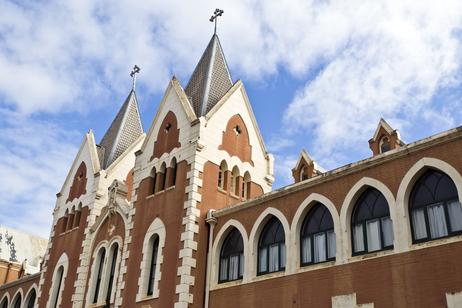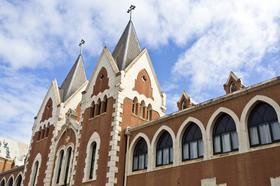Since the year 1913, American citizens have voted to elect state senators, but that has not always been the case. Up until the mid-1850s, senators were appointed by the legislatures of the state they represented in a system that worked quite well. The idea behind this method of selection was that allowing state legislatures to elect their senators would strengthen their ties to the national government and allow them to conduct business without the distraction of pressure from the general population.
Upon the ratification of the Seventeenth Amendment in 1913, however, things changed. Senators are now elected by popular vote with each senator representing a single state, and each state is represented by two senators. Senators play an important role in the U.S. government by writing and voting on bills, and legislation that affects the people in their representative state.
Because U.S. senators have the power to approve or deny legislation that directly affects their constituents, it is important that each senator be a fair representation of the people and the politics of each state. Problems arise when there is a disconnect between politics and the people – when a senator votes based on his own agenda rather than the will of the people. Each senator’s educational background and upbringing bear significant weight in the decisions he makes for his state.
We recently conducted a survey of all U.S. senators to collect some information about their educational background. After collecting this information, we analyzed it and were able to draw some interesting conclusions. Keep reading to learn more.
What Kind of Information Was Collected?
Over the course of several months, we placed phone calls to every U.S. senator’s office and asked the following questions:
- Did senator X attend a public or private high school?
- Did senator X ever attend a Montessori school?
- Did senator X ever attend boarding school?
- Did senator X send his children to private or public school?
After gathering the answers to these four questions, we tallied the results and did some analysis to see what kind of conclusions we could draw.
What Are the Results?
Out of 100 U.S. senators, 24 attended private school, and 76 attended public school for their high school education. Only 6 senators attended boarding school during their childhood, and none attended Montessori school. Given these statistics, several interesting points appear:
- Nearly 25% of U.S. senators attended private school when, according to the Council for American Private Education, only 10% of all U.S. students attend private school.
- More senators who attended private school themselves (24%) sent their children to private school (33%) than to public school.
- About 6% of U.S. senators attended boarding school during their youth compared to roughly 0.001% of the general student population in the United States.
To give you a visual representation of these statistics and more, here is an infographic. You'll find a map showing how many senators attended private school as well as statistics regarding the education of their children. We'll delve deeper into the implications of these facts and figures below.

1. Nearly 25% of U.S. senators attended private school when, according to the Council for American Private Education, only 10% of all U.S. students attend private school.
To take a closer look at the first statistic on this list, it is evident that U.S. senators from private schools are over-represented when compared to the total number of students who attend a private school in the country. While there are a number of reasons to choose private over public school, there is a popular opinion that students at private schools receive a higher quality of education than many public schools in the country. Though this is by no means always the case, private schools do tend to offer certain advantages such as the following:
- Smaller class sizes, more individualized attention
- Separate funding allows for more freedom with the curriculum
- Students may have access to better materials/technology
- Fewer regulations mean less red tape
It is also important to remember, however, that private schools charge tuition. To some degree, this limits the likelihood of students from certain socioeconomic statuses attending private school. It is interesting, then, to compare the net worth of these U.S. senators who attended private school to the net worth of the average American.
According to data from the 2014 U.S. Census Bureau, Survey of Income and Program Participation, the median net worth of Americans aged 35 to 44 is $45,740. For Americans aged 45 to 54, that number jumps to $100,404. According to data from The Center for Responsive Politics, the wealthiest U.S. senator in 2012, Mark Warner, had a net worth over $250 million – that’s more than 5,000 times the average net worth of Americans 35 to 44 and 2,500 times the worth of Americans 45 to 54.
It is also interesting to note that the majority of the U.S. senators who attended private school represent the eastern half of the country and that a majority of them represent the Democrat party. A total of 15 senators who attended private school are Democrats, and 9 are Republicans.
2. Roughly the same percentage of U.S. senators who attended private school (24%) also sent their children to private school (33%).
Not only is it interesting to see the educational background of U.S. senators spelled out in such simple terms, but it is also intriguing to see where they sent their own children to school. According to our research, 25 senators sent their children to private schools, and 59 sent theirs to public schools. Five senators’ children attended a mix of private and public schools, one was homeschooled, and ten senators had no children at the time.
Again, there is an issue of overrepresentation here. With 10% of students in the country attending private school, senators’ children are overrepresented at a rate of 25%. To delve a little deeper into this statistic, let’s take a look at politics. Of the 30 senators who sent their children to private school, 12 of them are Democrats, and 13 are Republicans. Five senators’ children attended a combination of private and public schools, 2 of which are Democrat and 3 Republican.
3. About 6% of U.S. senators attended boarding school during their youth compared to roughly 0.001% of the general student population in the United States.
This final statistic shows the greatest difference between the education of U.S. senators and the average American student. Only about 6,000 students in the United States attend college-preparatory boarding schools – that is about 0.001% of the American student population. Six of these students are now U.S. senators – that’s a rate of 6%, a significant overrepresentation.
Though each school is different, boarding schools are generally designed to prepare students for college-level work – this is why they are also sometimes referred to as college preparatory schools. Many boarding schools are co-educational, but about 75 out of the 300 are single-sex. Boarding schools must meet state minimum requirements, but otherwise, they have a great deal of freedom in designing their curriculum. In fact, 99% of boarding schools exceed minimum state requirements which says something about the quality of education these schools have to offer.
Not only do boarding schools have more control over their curriculum, but they tend to be staffed with a high percentage of teachers who hold advanced degrees. Boarding schools often have extensive athletic facilities as well, and many offer a wide variety of extracurricular activities. In terms of results, boarding school students said they were 78% prepared for college versus 36% of private school and 23% of public school students. Furthermore, 44% of boarding school students achieved a top position by the middle of their career compared to 33% of private school and 27% of public school students.
What Does It Actually Mean?
In order to be elected for U.S. Senate, senators must meet three criteria: (A) They must be at least 30 years of age; (B) They must have been U.S. citizens for the past 9 years or more; (C) They must live in the state they are seeking to represent. Though these requirements seem simple, they are actually more stringent than the requirements for representatives, and it is only within the past century that these requirements were actually upheld with any level of consistency.
The requirements for being elected senator say nothing about the individual’s educational or political background. You don’t have to be an expert to understand, however, how these things might impact a senator’s fulfillment of his duties – his own opinions and politics will be skewed to some degree by his educational background. It is interesting than that senators are overrepresented in certain areas such as attending private school or boarding school and in sending their own children to private schools.
In the midst of these statistics, we must remember that no government is perfect. It is also important to remember that things change over time. According to the original language of the constitution, the U.S. Senate was never meant to directly represent the U.S. populace – this may be part of the problem when it comes to differences between state politics and Senate representation.
Though the democratic system in the U.S. may be flawed, it is important to understand how the government works and what you can do to ensure that your rights and interests are accurately represented. If you feel like your state senator is not faithfully representing the politics of the state, do not hesitate to contact his office and make your voice heard! Senators can only represent the people when the people make their thoughts known.
Interested to learn more about the educational background of our nation's legislators? Check out the results of a survey we conducted regarding where the 115th House of Representatives went to school in this article.
Questions? Contact us on Facebook. @privateschoolreview















